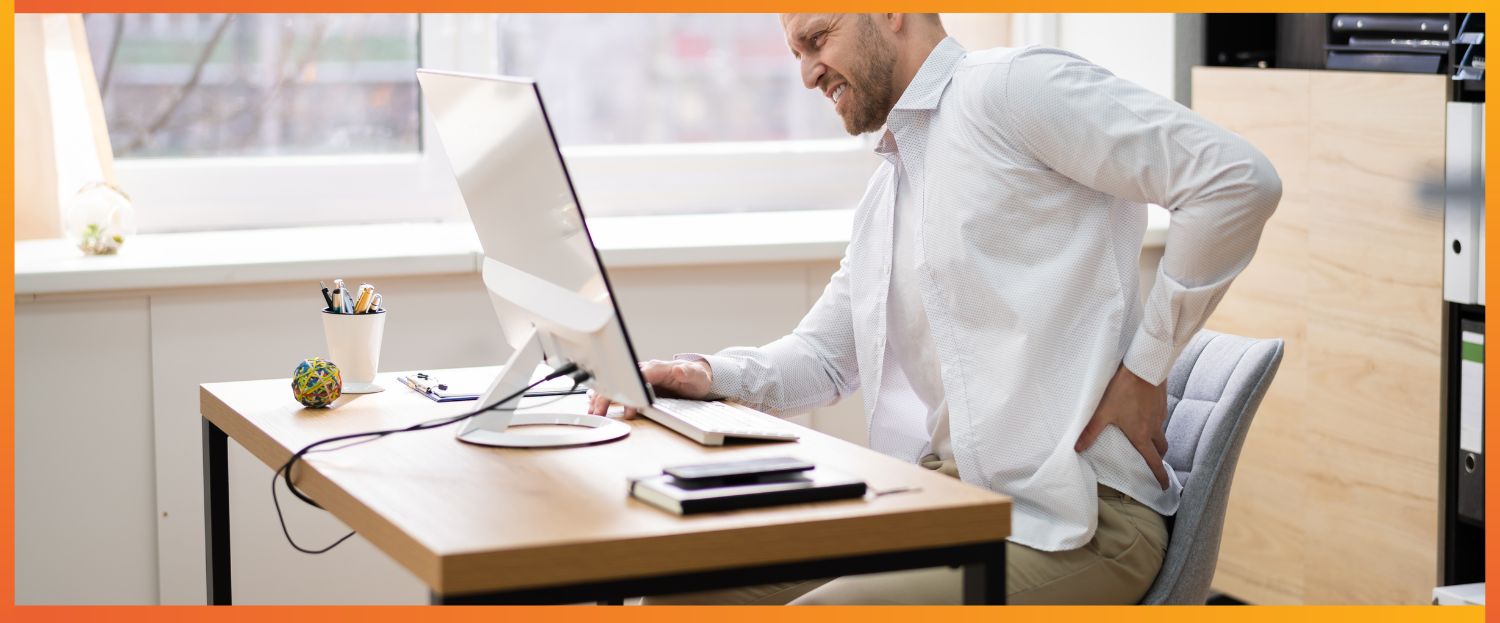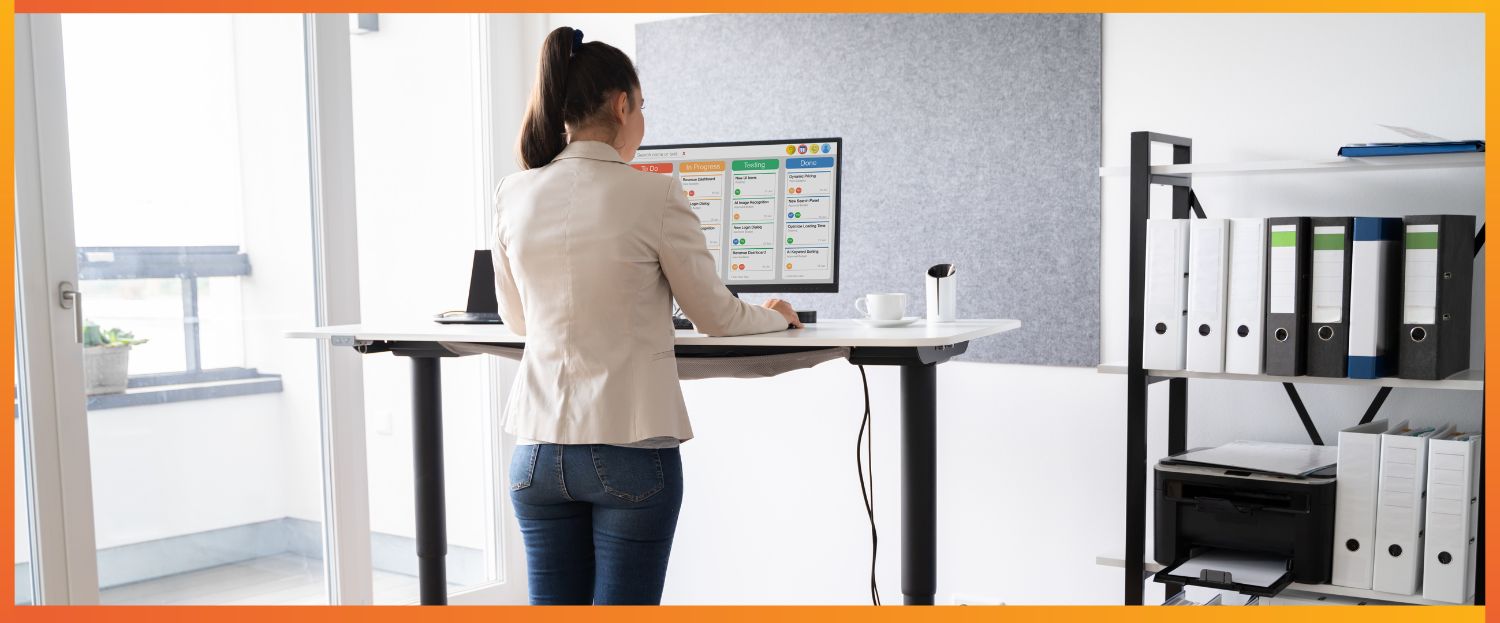Types of Desks and Their Height Considerations
Choosing the right desk height is crucial for comfort and efficiency. Adjustable desks and standard sitting desks offer distinct benefits and considerations based on their design and intended use.
Adjustable Desks
Adjustable desks offer flexibility, allowing you to switch between sitting and standing positions. They usually feature a range of heights from 60 to 125 cm. This type is excellent for those who prefer a dynamic work environment. Electric or manual mechanisms can be used to adjust the height easily.
Key Considerations:
- Transition smoothly between sitting and standing.
- Set the desk height based on your chair height when sitting.
- Ensure sturdy construction to prevent wobbling.
Standard Sitting Desks
Standard sitting desks are the most common and often have a set height, typically around 73-75 cm. These desks are suited for tasks that require prolonged sitting. It's crucial to pair a sitting desk with a high quality ergonomic office chair to maintain comfort.
Points to Note:
- The desk height should allow your arms to rest comfortably.
- Ensure your feet can rest flat on the ground or on a footrest.
- Monitor should be at arm's length and at eye level (monitor arms can be used for extra customisation of your workstation).
These desks come in various materials and designs to suit different preferences and spaces, ensuring a wide range of choices to match your needs.
Ergonomic Set-Up for Desk Users
Creating an ergonomic workstation involves carefully considering your chair height, monitor position, and placement of your keyboard and mouse. Each element plays a crucial role in maintaining comfort and preventing strain.

Chair Height and Posture
Chair height is foundational to any ergonomic setup. Adjust your office chair so your feet rest flat on the floor and your knees form a 90-degree angle. This promotes healthy posture, reducing fatigue over long periods.
An ergonomic chair with adjustable features, like lumbar support and seat depth, is beneficial. When seated, your hips should be at or slightly above knee level. This alignment relieves pressure on your lower back, encouraging an upright, comfortable posture.
Monitor Height and Distance
Position the top of your monitor screen at or slightly below eye level. This helps maintain a neutral neck position. Ensure a distance of an arm's length between your eyes and the monitor to minimise eye strain.
An adjustable monitor arm or stand is useful for setting the right height. If you wear bifocals, you may need to lower the monitor to reduce the need to tilt your head back. This setup keeps your neck and head relaxed.
Keyboard and Mouse Positioning
Place the keyboard and mouse so your forearms are parallel to the ground. Your wrists should be straight and aligned with your forearms. Using an ergonomic keyboard and a mouse that fits comfortably in your hand enhances comfort.
Position these devices close together to avoid unnecessary reaching. Keep your elbows close to your body and form an open angle at the elbow to avoid tension. Consider a wrist rest to maintain a neutral position.
Health Implications of Desk Height
The height of your desk can significantly influence your physical well-being. An improperly adjusted desk may lead to chronic back pain and hinder blood circulation.
Avoiding Chronic Back Pain
A desk that is set at the correct height helps you maintain a natural posture, which is crucial for spinal health. When seated, your feet should be flat on the floor, and your knees should be at a 90-degree angle.
The height should allow your elbows to sit comfortably at your side at a 90-degree angle, with your wrists in line with your desk. This setup reduces strain on your back and shoulders. An ergonomic chair can also support your lumbar area, which is essential for preventing back pain.
Making adjustments to your workspace can offer long-term benefits, lessening the chances of chronic muscle tension and discomfort. Consider using an adjustable desk and chair to find the right configuration that suits your body.
Promoting Blood Circulation
For optimal blood circulation, your desk should encourage you to move periodically. Standing desks can help promote movement, as alternating between sitting and standing increases circulation and can also help you burn more calories.
When seated, ensure there is ample space under the desk for your legs to shift positions, helping prevent numbness and reducing the risk of deep vein thrombosis.
Legroom is necessary to avoid pressure on your thighs and maintain good blood flow. You might also consider a footrest, which can reduce pressure on your lower limbs. The right desk height plays a crucial role in encouraging natural movement and preserving your circulatory health.
Maximising Productivity Through Desk Arrangement
A well-organised desk is key to maintaining productivity throughout your workday. Here are some fresh ideas and tips to maximise productivity through effective desk arrangement:

1. Declutter and Simplify 🗑️
- Remove Non-Essentials: Keep your workspace clean by removing unnecessary items.
- Minimalist Approach: Less clutter means less distraction, so keep only the items you use daily within reach.
2. Arrange for Easy Access ✋
- Frequently Used Items: Store essential items like your phone, notepad, or stationery where they are easy to access without stretching.
- Categorise Work Zones: Create different zones for specific activities:
- 🖥️ Tech Area for your computer and peripherals
- ✍️ Writing Space for taking notes or reviewing documents
- 📚 Reference Area for books and other materials
3. Ergonomic Accessories for Productivity ⚙️
- Monitor Arms: Use adjustable monitor arms to keep screens at eye level.
- Cable Management Solutions: Use clips or channels to keep cables neatly organised and out of the way.
- Footrests and Wrist Supports: Accessories like a footrest or a wrist support can help improve posture and reduce discomfort.
4. Improve Lighting 💡
- Utilise Natural Light: Position your desk near a window to take advantage of natural light, boosting your mood and energy.
- Add Task Lighting: If natural light isn't available, use a task lamp to brighten your workspace and reduce eye strain.
- Avoid Glare: Adjust the position of your monitor and lamps to avoid glare, which can strain your eyes.
5. Personalisation for a Boost 🌼
- Add Personal Touches: Include items that make you happy, such as a plant 🌱, a photo frame 🖼️, or an inspirational quote. These items can lift your mood without adding to clutter.
- Adjust Temperature and Comfort: Keep a small fan or blanket nearby if you often feel too hot or cold—comfort is critical to productivity.
6. Stand-Up Reminders ⏰
- Encourage Movement: Use sticky notes or digital reminders to encourage standing up or stretching periodically.
- Standing Mat for Comfort: If you have a standing desk, invest in an anti-fatigue mat for added comfort.
7. Efficient Desk Layout 📐
- Left-to-Right Workflow: If you’re right-handed, set up your desk to flow from left to right—an inbox for new tasks on the left, workspace in the middle, and an outbox for completed work on the right.
- Cable Management: Bundle cables together and keep them hidden to reduce visual clutter and potential distractions.
By optimising your desk arrangement, you can create a workspace that keeps you motivated, organised, and ready to tackle your tasks efficiently.







